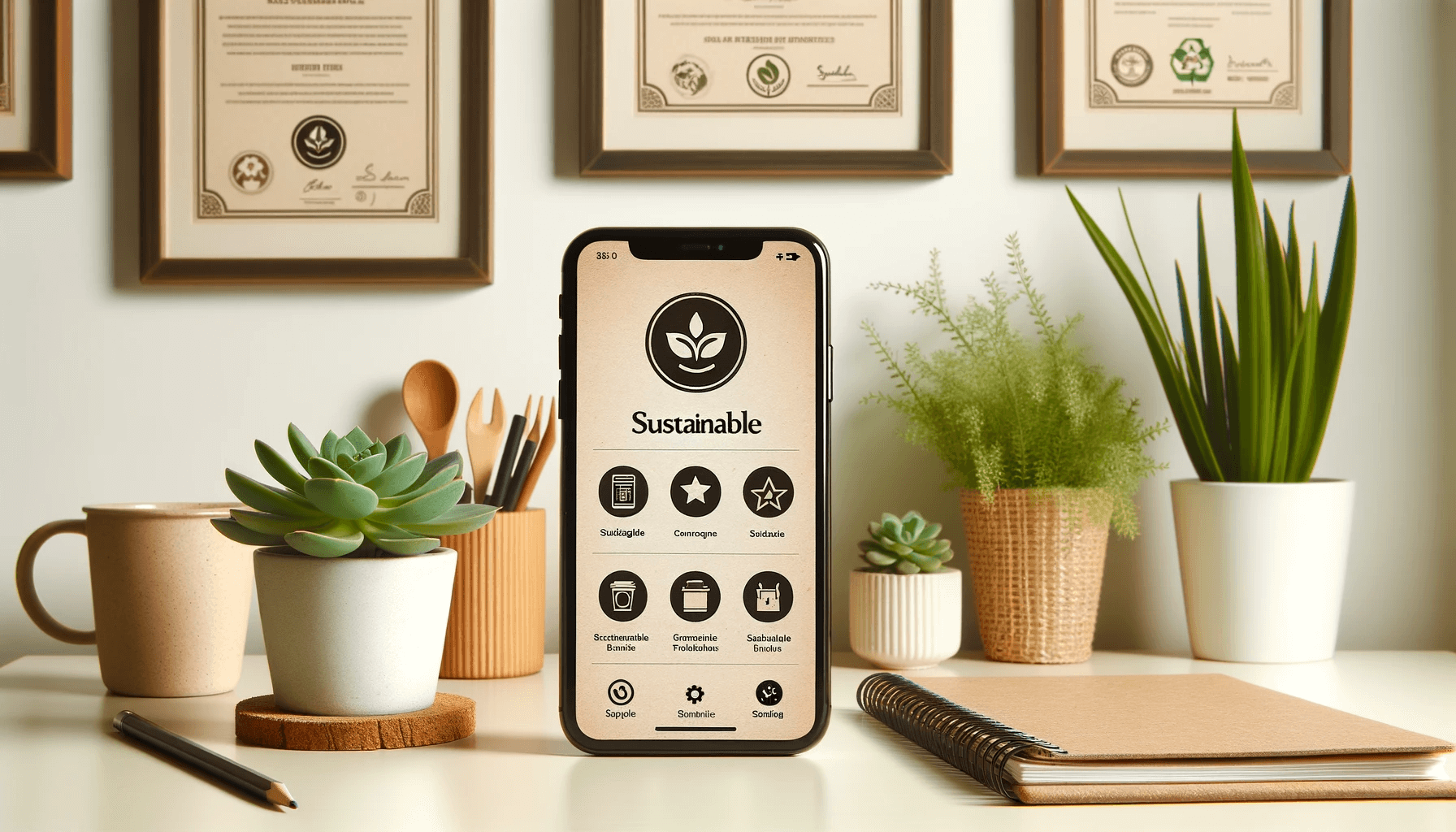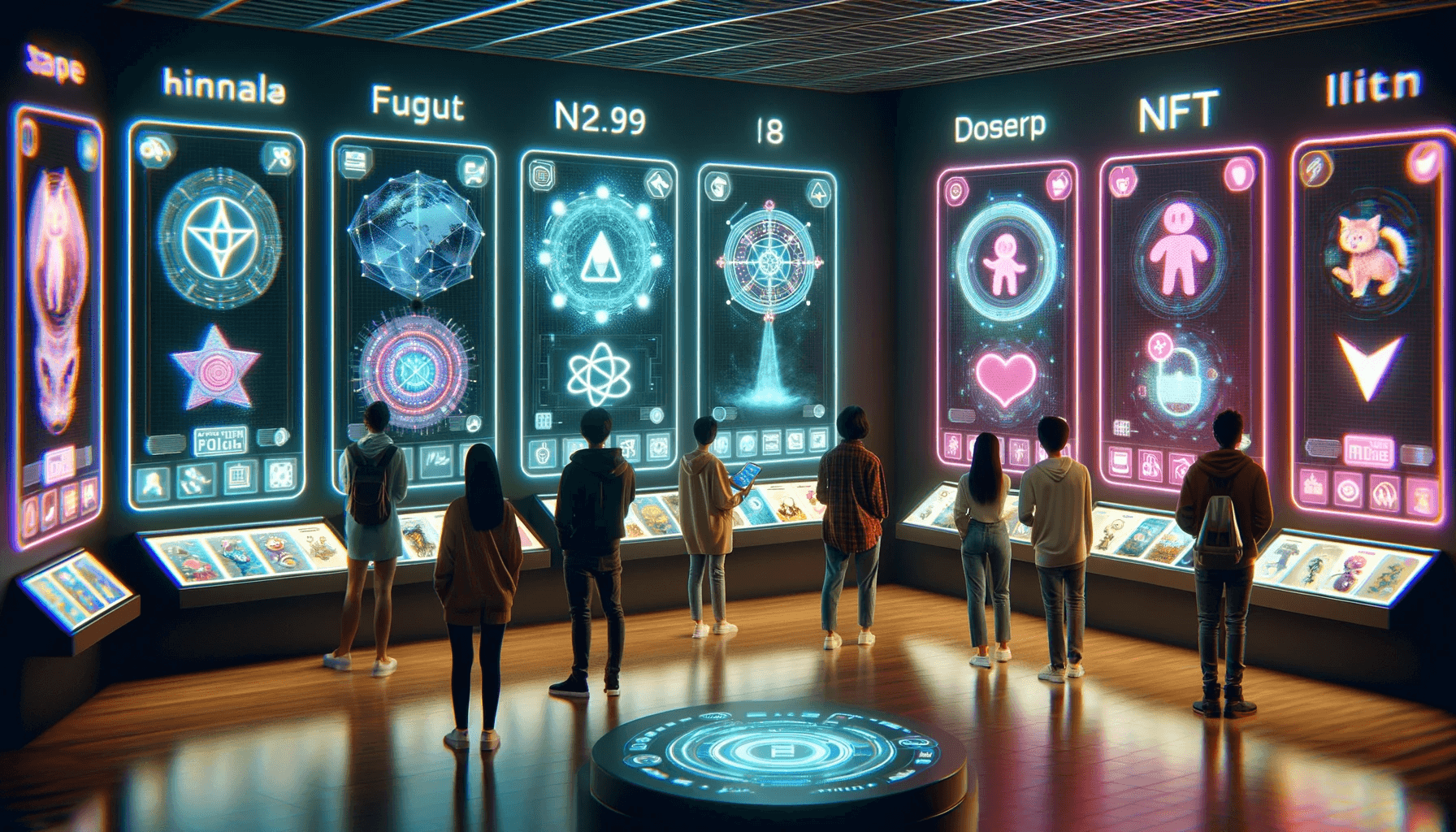The rise of personalized news apps and tailored content has revolutionized the way we consume news and information. These innovative technologies have transformed the traditional media landscape by providing users with customized news experiences that cater to their individual interests and preferences.
Personalized news apps utilize sophisticated algorithms to curate and deliver content based on user preferences, browsing history, and interaction patterns. By analyzing user data, these apps can offer a tailored news feed that aligns with a user’s specific interests, ensuring that they receive news articles and updates relevant to them.
The benefits of personalized news apps are significant. Users can enjoy a more streamlined and efficient news consumption experience, as they no longer need to sift through irrelevant or uninteresting content. The convenience of having curated news delivered directly to their devices saves time and provides a more personalized and engaging experience.
Similarly, tailored content has its advantages. It allows individuals to receive content that matches their preferences across various platforms, including social media feeds, streaming services, and online retailers. This personalized approach enhances the user experience, providing them with content that is more relevant, meaningful, and tailored to their specific needs.
However, the rise of personalized news and tailored content is not without its impact and concerns. One major impact is the fragmentation of information, where individuals are exposed to different sources and perspectives, potentially leading to echo chambers and a narrowed view of the world. The filter bubble effect further exacerbates this issue by reinforcing pre-existing beliefs and limiting exposure to diverse viewpoints. These developments pose challenges to traditional journalism, as news organizations must adapt to changing consumer preferences and expectations.
Furthermore, concerns and criticisms surrounding personalized news and tailored content have emerged. The echo chamber effect, for instance, refers to the reinforcement of existing beliefs and opinions without exposure to contrasting viewpoints. Manipulation and biased content are also concerns as algorithms may prioritize certain perspectives or generate content based on user biases. To address these issues, transparency in algorithmic personalization and media literacy skills are crucial in ensuring a balanced and unbiased information environment.
Looking towards the future, advancements in AI and machine learning will continue to shape personalization of news and tailored content. These technologies hold the potential to further refine and improve the accuracy and relevance of personalized news experiences. However, ethical considerations must be taken into account, ensuring that algorithms are designed responsibly, maintaining user privacy, and upholding journalistic integrity.
Key takeaways:
- Personalized news apps cater to individual interests and preferences, offering tailored content that matches the user’s specific needs.
- These apps enhance the user experience by providing relevant and targeted information, saving time and effort in searching for relevant news.
- However, the rise of personalized news apps brings concerns about information fragmentation and the filter bubble effect, requiring media literacy and critical thinking to find the right balance.
The Rise of Personalized News Apps and Tailored Content
In today’s digital era, we’re witnessing an incredible surge in the popularity of personalized news apps and tailored content. This section unravels the fascinating journey of these apps, diving deep into the understanding of how they work and uncovering the myriad benefits they bring to users. Prepare to be amazed as we explore the realm of personalized news apps, where information is tailored to your preferences, delivering a truly unique and customized news experience. Get ready to discover the power and advantages of embracing this innovative trend in the world of news consumption.
Understanding Personalized News Apps
Understanding personalized news apps is crucial in today’s digital age where information overload is a constant challenge. Here are some key points to consider:
- Customized content: Personalized news apps are designed to curate news articles based on user preferences, interests, and browsing history.
- Filtered news: By utilizing algorithms, these apps effectively filter out irrelevant or less interesting news, delivering a more tailored and focused news experience.
- Convenience: With personalized news apps, users have the flexibility to access news at any time and from anywhere. They can also customize notifications to receive updates on specific topics.
- Discover new perspectives: Personalized news apps go beyond just delivering news that aligns with the user’s existing views. They also recommend articles that may challenge those views, promoting a more diverse understanding of current events.
Benefits of Personalized News Apps
- Personalized news apps offer several benefits to users such as curated information, time-saving, increased engagement, and discovering new topics.
- Curated Information: Users receive news and content tailored to their specific interests and preferences with personalized news apps.
- Time-saving: Personalized apps filter out irrelevant information, allowing users to focus on what matters most to them and saving their valuable time.
- Increased Engagement: Personalized news apps help to keep users engaged and informed by delivering content that aligns with their interests.
- Discover New Topics: These apps also have the ability to introduce users to new topics and perspectives that they may not have discovered otherwise, adding to the benefits of personalized news apps.
Using personalized news apps provides users with the benefits of curated information, time-saving, increased engagement, and discovering new topics of interest.
Advantages of Tailored Content
Discover the countless perks of tailored content in the realm of personalized news apps. Uncover how this approach revolutionizes the way we consume information by catering to individual interests and preferences. Dive into a whole new level of user experience where every article, video, and recommendation is hand-picked just for you. So, brace yourself for a world where news becomes a customized journey designed to keep you engaged, informed, and satisfied.
Catering to Individual Interests and Preferences
Catering to individual interests and preferences is a primary advantage of personalized news apps and tailored content. These platforms offer users the ability to customize the types of news articles, topics, and sources they receive based on their personal preferences. Here are several ways in which personalized news apps cater to individual interests and preferences:
| Topic selection: Users can select the specific topics they are interested in, such as technology, sports, or politics. Source selection: Users can choose their preferred news sources, ensuring that they get information from the outlets they trust. Notification settings: Personalized news apps allow users to customize their notification settings, ensuring they receive news updates in a manner that suits their preferences. Recommendation algorithms: These apps utilize sophisticated algorithms to analyze user behavior and suggest news articles that align with their interests. |
Pro-tip: It is advisable to regularly review and update your preferences to ensure you receive the most relevant and tailored news content.
Enhanced User Experience
Enhanced User Experience is a significant advantage of using personalized news apps and tailored content. By carefully selecting news articles and content based on individual interests and preferences, these apps provide a more captivating and pertinent experience for users. With personalized news, individuals can effortlessly access the information that matters the most to them, ultimately saving time and effort. Moreover, these apps have the capability to adapt to user behavior and preferences over time, further augmenting the overall user experience. The ability to personalize news content ensures a more satisfying and enjoyable news consumption journey for each individual. Ultimately, personalized news apps elevate the user experience by delivering customized content that perfectly caters to individual needs and interests.
The Impact of Personalized News and Tailored Content
Discover the profound influence of personalized news apps and tailored content. From the fragmentation of information to the filter bubble effect and the challenges faced by traditional journalism, this section unravels the far-reaching consequences of this modern trend. With a rise in user preferences and customized news delivery, we delve into how these dynamics reshape the way we consume information and pose both opportunities and challenges in the ever-evolving media landscape.
Fragmentation of Information
Fragmentation of information is a prevalent outcome of personalized news and tailored content. This can be observed in several ways:
- News sources: Personalized news apps offer custom-made content based on individual preferences, resulting in users solely accessing information from sources that align with their interests.
- Topics: Tailored content often focuses on particular subjects that users are interested in. This can lead to a limited perspective as users may overlook significant news and diverse viewpoints.
- Filtering: Personalization algorithms eliminate information that does not match user preferences, contributing further to the fragmentation of information.
Sarah utilized a personalized news app that exclusively showcased articles about fitness and healthy eating. One day, she remained completely unaware of a major political event occurring in her country because it did not fit into her personalized content bubble. This incident shed light on the disadvantages of fragmented information and motivated her to broaden her news sources.
Filter Bubble Effect
The Filter Bubble Effect is a growing concern in today’s digital age, particularly prevalent in personalized news apps and tailored content. This effect highlights the tendency for individuals to be exposed solely to information and perspectives that align with their own beliefs and interests, resulting in the creation of a metaphorical bubble of like-mindedness. Unfortunately, this can lead to a limited and biased understanding of the world as users are not exposed to a diverse range of opinions and viewpoints. To address this issue, it is vital for individuals to actively seek out alternative perspectives, engage in critical thinking, and diversify their sources of news and information.
Allow me to share a real-life story that perfectly illustrates the significance of the Filter Bubble Effect. This story revolves around an individual who heavily relied on a personalized news app for their daily dose of information. However, this person soon realized that they were constantly surrounded by news articles that only reinforced their existing beliefs and opinions. As a result, they gradually became aware of the lack of diversity in viewpoints and the negative impact it had on their overall understanding of current events. This eye-opening experience prompted them to take proactive steps to seek out alternative news sources and actively engage with differing perspectives. As they broadened their knowledge and challenged their preconceptions, their understanding of the world became more nuanced and well-rounded.
Challenges to Traditional Journalism
The rise of personalized news apps and tailored content poses challenges to traditional journalism. The fragmentation of information is one of these challenges. With personalized news, individuals may only consume content that aligns with their interests, resulting in a fragmented understanding of the news landscape. Another challenge is the filter bubble effect caused by personalized news. This effect creates echo chambers, reinforcing pre-existing beliefs and limiting exposure to diverse perspectives.
In addition, personalized news algorithms prioritize user engagement over editorial judgment, potentially undermining the role of news organizations as gatekeepers of reliable information. To address these challenges, it is important to promote transparency in algorithmic personalization and encourage media literacy and critical thinking skills. By finding the right balance between personalized content and access to diverse information, we can ensure the future of journalism.
The Rise of Personalized News Apps and Tailored Content
Concerns and Criticisms
In the world of personalized news apps and tailored content, there are certain concerns and criticisms that deserve our attention. Let’s dive into the darker side of this trend, exploring the echo chamber effect and the dangers of manipulation and biased content. Brace yourself as we uncover the potential downsides lurking behind the glossy facade of personalized news consumption.
Echo Chamber Effect
The echo chamber effect is a phenomenon in which individuals are only exposed to information and viewpoints that align with their existing beliefs, leading to an amplification of their own perspectives and a narrowing of their worldview. Personalized news apps and tailored content can contribute to this effect by carefully curating and presenting news based on a user’s preferences and past behavior, reinforcing their existing beliefs and limiting exposure to alternative viewpoints. This can result in a lack of diversity in thought, reduced critical thinking, and the creation of polarized online communities. It is crucial to be mindful of the echo chamber effect and seek out diverse sources of information to foster a more balanced understanding of the world.
Jenny was an avid user of a personalized news app that tailored content to her political leanings. Over time, she noticed that all the news articles she consumed reinforced her existing beliefs, creating a bubble of confirmation bias. One day, she decided to diversify her news sources and venture out of her echo chamber. She was amazed by the range of perspectives she discovered and the nuanced understanding she gained. Jenny realized the importance of challenging her own biases and actively seeking out diverse viewpoints to avoid being trapped in an echo chamber.
Manipulation and Biased Content
Manipulation and biased content are significant concerns when it comes to personalized news apps and tailored content. Given the algorithms employed in curating news, there is a potential for manipulation and the dissemination of biased narratives. This can result in the proliferation of false information and the establishment of echo chambers, wherein individuals are exclusively exposed to data that corresponds with their pre-existing beliefs. To combat these concerns, transparency in algorithmic personalization is of utmost importance. Promoting media literacy and cultivating critical thinking skills can aid users in navigating through biased content. Striking a balance between personalization and ensuring the inclusion of diverse perspectives is vital for the future of personalized news apps and tailored content.
Finding the Right Balance
From understanding the importance of transparency in algorithmic personalization to fostering media literacy and critical thinking, let’s dive into the sub-sections of “Finding the Right Balance” in the article on “The Rise of Personalized News Apps and Tailored Content”. Get ready to uncover the key elements that play a vital role in navigating the evolving landscape of personalized news and curated content. Buckle up as we explore how transparency and critical thinking contribute to finding the right balance in this digital era.
Transparency in Algorithmic Personalization
In order to ensure user trust and ethical practices in personalized news apps, transparency in algorithmic personalization is crucial. Companies must provide clear explanations of how their algorithms work and how they personalize content to achieve this transparency. This includes disclosing the types of data collected, its usage, and its influence on content recommendations. Users should have the ability to control and adjust their personalization settings. By promoting transparency, users can gain a better understanding of how their information is being used, resulting in a more informed and empowered user experience.
Media Literacy and Critical Thinking
Developing media literacy and critical thinking skills is crucial in the era of personalized news apps and tailored content. With the abundance of information available, it is essential to incorporate media literacy and critical thinking practices to evaluate sources, fact-check, and understand biases. Media literacy empowers individuals to critically analyze news, identify misinformation, and make well-informed decisions. It enables one to question sources, determine credibility, and recognize potential manipulation, thereby enhancing their media literacy and critical thinking skills. These skills are vital in supporting independent judgment and help detect cognitive biases, ensuring a comprehensive understanding of diverse perspectives. By actively cultivating media literacy and critical thinking skills, individuals can effectively navigate the complex media landscape, ultimately becoming discerning consumers of news and information.
The Future of Personalized News and Tailored Content
As we plunge into the future of personalized news and tailored content, we’ll explore two captivating aspects: the remarkable advancements in AI and machine learning, and the crucial ethical considerations they present. Unveiling the power of data-driven technology and its potential to revolutionize how news is delivered, we’ll also delve into the moral dilemmas that come hand in hand. Let’s embark on this thrilling journey into the realm of personalized news and discover the fascinating landscape that awaits us.
AI and Machine Learning Advances
- AI and machine learning advances have transformed the landscape of personalized news apps and tailored content. There have been notable advancements in this field:
- Improved Recommendation Systems: Leveraging the power of AI algorithms, user behavior, preferences, and interests are analyzed to offer more precise and relevant content recommendations.
- Automated Content Generation: With the power of AI, personalized news articles, summaries, and even social media posts can now be generated based on individual user preferences.
- Real-Time Personalization: By utilizing machine learning models, content can be customized in real-time, providing users with up-to-the-minute news and updates that align with their specific interests.
- Enhanced Natural Language Processing: Revolutionary AI algorithms have significantly enhanced their ability to understand and process human languages, resulting in better comprehension of user queries and the delivery of more relevant search results.
- Smart Content Curation: The remarkable capabilities of AI enable personalized content curation, offering users a diverse range of perspectives and effectively minimizing the impact of filter bubbles.
Fact: According to a survey, a staggering 80% of smartphone users express keen interest in personalized content recommendations generated by AI algorithms.
Ethical Considerations
- When it comes to personalized news apps and tailored content, ethical considerations are of utmost importance. Here are some vital factors to ponder:
- Data Privacy: It is crucial to protect user data and ensure that it is not misused or shared without consent.
- Algorithmic Transparency: To maintain transparency, it is essential to provide clear explanations of how algorithms personalize content.
- Diverse Perspectives: By including diverse viewpoints and minimizing bias, it is important to avoid creating filter bubbles.
- Ethical Advertising: It is necessary to be mindful of the ethical implications of targeted advertising and ensure that it aligns with user interests.
To strike a balance between personalization and ethical considerations, it’s essential to prioritize user privacy, foster diverse perspectives, and maintain algorithmic transparency. By doing so, personalized news apps and tailored content can enhance the user experience while upholding ethical standards.
Frequently Asked Questions
1. What is news personalization and how does it impact the audience perspective?
News personalization refers to the customization of news content and delivery based on individual preferences, behaviors, and characteristics. It allows users to receive news that aligns with their interests and filter out irrelevant information. While it helps individuals manage information overload and create unique news diets, it also poses risks of filter bubbles and bias, potentially hindering people’s understanding of global events and their ability to predict the future accurately.
2. How do technology companies like Google and Facebook contribute to the rise of personalized news?
Technology companies like Google and Facebook have played a significant role in delivering personalized news, surpassing traditional newsrooms. Google, for example, incorporated a news filter into its search algorithm to display timely headlines for relevant keywords. Today, search results for news on Google are influenced by a person’s search history, location, and demographic information. Similarly, Facebook allows users to choose which organizations’ stories appear in their news feeds, tailoring the content to their preferences.
3. What are the risks associated with personalized news?
Personalized news may create filter bubbles and echo chambers, where individuals only receive news that aligns with their beliefs and preferences, rather than being exposed to a diverse range of perspectives. This can hinder people’s understanding of global events and their ability to predict the future accurately. Additionally, there are concerns about the proliferation of websites with extreme political views, which can be easily mistaken on platforms like Facebook.
4. How can news organizations embrace personalization to attract and retain audiences?
News organizations can embrace personalization by offering features such as homepage personalization, where registered users can customize their news feed based on their interests. They can also utilize data-tracking and analysis to understand readers’ behaviors and reading history, enabling them to surface content that is more relevant to individual users. Additionally, news publishers can experiment with new technologies for news delivery and integrated personalization, such as voice-activated artificially intelligent devices and machine-learning platforms.
5. What is the role of public service media in news personalization?
The role of public service media in news personalization involves considering the use of new technologies and understanding country-specific expectations. Public service media organizations need to navigate the balance between personalization and maintaining the values of public service, such as providing a diverse range of news and fostering informed citizenship.
6. What are some of the potential benefits and concerns associated with news personalization?
The benefits of news personalization include helping individuals manage information overload, creating unique news diets, and keeping subscribers engaged. However, concerns include the risks of filter bubbles, biased information, and the potential hindrance of people’s understanding of global events. Striking a balance between personalized news and providing diverse perspectives is crucial to ensure an informed society.






